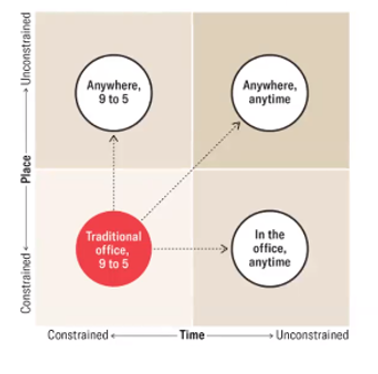
Developing authentic culture at work takes more than free lunches and ping pong tables

Employers who take the time to develop a thriving and inclusive workplace culture are more likely to have engaged employees who are more productive and are more likely to remain with the company. Part of the key to this is understanding that, in the workplace, respect matters most.
On Wednesday, 29 June 2022, Indeed and HRD hosted a roundtable discussion titled: “What’s worrying your workforce? Understanding happiness in the workplace”. This roundtable covered a broad range of issues including navigating hybrid working environments, employee wellbeing techniques and initiatives and useful insights to help create thriving workplace cultures.
Indeed’s mission is to drive and cultivate diversity, inclusion and belonging (DI&B) in the workplace and to help create psychologically safe workplaces for all – as workers start to reimagine work post-pandemic.
Our roundtable was hosted by moderator, Kylie Speer. Today’s keynote speaker was Australian psychologist, Amanda Gordon, who is an expert on positive relationships and workplace wellbeing. Gordon is also a media psychologist with more than 30 years’ experience in radio, TV and print media across Australia. Gordon led discussion by breaking the roundtable into five different rounds (on each topic) – with ten minutes of discussion for each round. The focus of this roundtable was on creating thriving workplace cultures.
Amanda Rogers started by saying “there hasn’t been a clear understanding of the relationship between workplace culture and mental health”. In her presentation, she outlines that people’s experiences outside of the workplace shape their experiences of life at work. So, employers need to be consider how work is being integrated into their lives. She also noted that “the traditional nine-to-five is gone”. In this sense, wellbeing and engagement are reciprocal values which need to be nurtured.
For the second topic of the roundtable, Amanda considered four following core values of:
She said that workers will experience disappointment when their employer fails to honour these key core values. She also considered what it means for a workplace if any of these values are not adhered to. She identified five attributes of toxic work microcultures as follows:
Amanda emphasised the importance of respect in the workplace. She noted that “The larger the organisation, the more likely there will be microcultures”. Workplaces where there are toxic microcultures with some of the features shown above, can “supersede the culture of the organisation”.
In particular, she noted that certain groups are more vulnerable, saying that: “Women, minorities and older employees more likely to be most impacted by microcultures where they are excluded.” When employees feel they are being disrespected, they tend to become disengaged. Disengaged workers are on average 20% less productive than their colleagues who reported feeling engaged in the workplace. She also said that: “The most powerful predictor that a company is toxic is that it’s non-inclusive.” At the upper end of scale was a cutthroat work culture which is “when colleagues deliberately undermine each other”.
Moving ahead, Amanda looked at the question of “How do bring people back to the office?” Discussion focused on the issues around hybrid work, keeping people engaged, fighting burnout and acknowledging Zoom exhaustion.
Read more: Zoom fatigue: How HR can help exhausted workers
The next segment of the roundtable looked at the nature of hybrid across four distinct perspectives:
Hybrid work takes place across four different segments:

Image source: Roundtable slides
The next session of the roundtable the following ways to keep people engaged. This included:
Companies with the best workplace cultures are those who succeed in keeping their employees engaged and respected.
Read more: These companies have the best workplace cultures, according to employees
The key takeaways from this Roundtable were that for workplaces to thrive they must insist on: